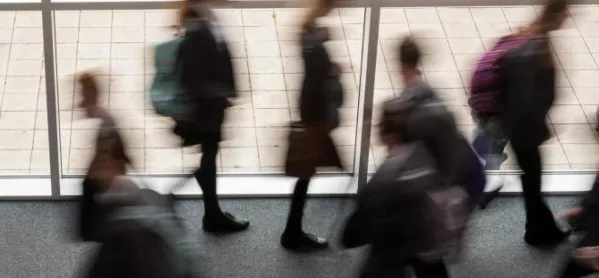‘Opening all schools at once could blow up in our face’

We’ve heard a lot in the media this week about how the Westminster government is thinking of a full return to schools on 8 March - with all the children in England back in the classroom at exactly the same time.
The fashionable phrase for this approach appears to be “big bang”. It’s an unfortunate expression when attached to a crucial policy decision in the middle of a pandemic. Anything that conjures up an image of sudden and uncontrolled exponential growth sounds like a very bad idea.
And as the day on which the prime minister is expected to make his announcement about the wider opening of schools draws closer, the possibility of a “big bang” approach certainly does seem increasingly reckless.
Why would England alone take such a gamble, when the governments in Scotland, Wales and Northern Ireland have all decided on a more cautious, phased approach to full reopening?
With so much uncertainty about how school opening affects the overall rate of transmission, the obvious solution is surely to reintroduce groups of children over time, so that the impact can be assessed before moving to the next phase.
Reopening schools: The need for caution
Common sense alone would suggest the need for caution. The full reopening of schools would reintroduce nearly 10 million pupils and staff into daily circulation - not far off one-fifth of England’s population. It is a massive relaxation of lockdown restrictions, and doing it all in one go seems very risky.
It isn’t just what happens in schools themselves that is the issue. We know how hard they have worked to put in place the “hierarchy of control measures” that have become part of the educational lexicon over the past year. The issue, however, goes beyond the school gates as students, and parents, transit backwards and forwards to school each day.
The potential for more mixing, more contacts and more transmission amid all those millions of movements is obviously enormous. And the submicroscopic viral particles that have wreaked such havoc are now more infectious in the new strain of the disease than was previously the case.
All of this was worrying enough, even before we saw yesterday’s report from Imperial College London’s React 1 study, which found that there has been an overall decline in infections in all age groups, but that Covid is now most commonly found among five- to 12-year-olds and 18- to 24-year-olds.
The relatively higher prevalence among younger children is significant, in that it comes after primary schools have seen a much greater demand for places during restricted opening than in the first lockdown, with nearly a quarter of pupils currently taught in the classroom. There could, of course, be other factors involved, but this should - at the very least - emphasise the need for extreme caution.
Coronavirus: Gazing into a crystal ball
There will inevitably be those who say that the risk to the education and wellbeing of children by being out of school outweighs the risk of a rise in Covid infections, and that a full return should therefore happen on 8 March. They may argue that the danger of an increase in transmission is containable with other lockdown restrictions in place in wider society.
The problem with this argument is that we are trying to gaze into a crystal ball. There is no way of knowing exactly what impact the full opening of schools would have on the virus. It may lead to a new spike in infections, which ends up forcing the country back into another lockdown. All the hard-won gains of this lockdown would be lost, and most children would once again be back at home. Or it might indeed be containable, and the infection rate might remain manageable.
We will only know by actually going through the process of wider opening. Surely it would be prudent to do that slowly and carefully, rather than like some sort of high-stakes casino roller. If this pandemic has taught us anything, it is surely the need for caution.
A phased approach could be done by prioritising certain year groups to come back first of all. However, I would - yet again - urge the government to seriously consider the use of rotas. This provides the benefit of having smaller groups - minimising mixing and allowing for social distancing - while also ensuring that all children have time in class with their teachers sooner rather than later.
And I would also urge the government to consider a regional or local approach, if necessary, given the fact that infection rates vary widely across England. What might be the right approach in one area of the country is not necessarily the right approach in another.
None of this is intended to stand in the way of schools and colleges fully opening. On the contrary, the aim must be to ensure that they do so safely and sustainably - so that once they are open, they remain open.
This is a time for caution - rather than risking a big bang that could blow up in our faces.
Geoff Barton is general secretary of the Association of School and College Leaders
You need a Tes subscription to read this article
Subscribe now to read this article and get other subscriber-only content:
- Unlimited access to all Tes magazine content
- Exclusive subscriber-only stories
- Award-winning email newsletters
Already a subscriber? Log in
You need a subscription to read this article
Subscribe now to read this article and get other subscriber-only content, including:
- Unlimited access to all Tes magazine content
- Exclusive subscriber-only stories
- Award-winning email newsletters